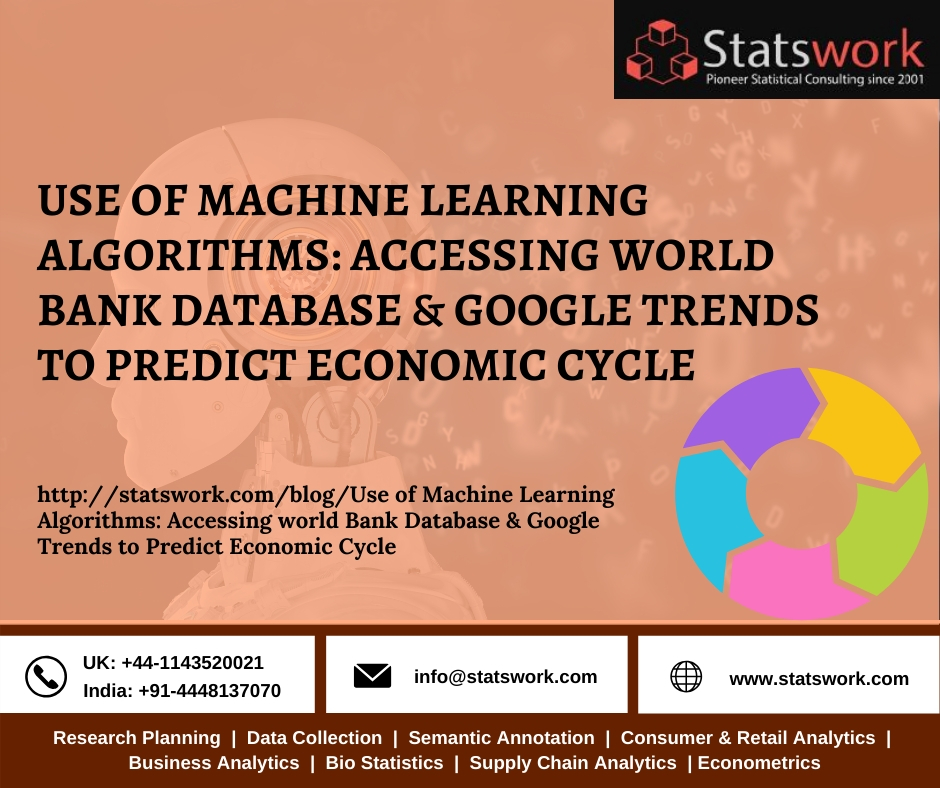In Brief:
- With the combination of math, statistics, and computer science, the big data analysis and ML algorithms are becoming more and more computationally emphasized.
- Google Trends data can aid advance in forecasts of the current level of activity for several different economic time series.
- Collective variables using in this blog were perceived from the source agents who effectively collected data details from trends of the world for quickly accessing, for example, Google Trends and World Bank Database.
Information and internet technology has accepted new web-based facilities that affect every aspect of today’s financial and commercial activity. This generates massive amounts of big data. Such data are shaped in real-time, in differing formats, and by a varied range of institutions and entities. For their part, world banks face a flow in “financial big data sets”, replicating the combination of new emerging electronic footprints as well as large and rising financial, administrative and commercial records. This phenomenon can reinforce analysis for decision-making, by providing more comprehensive, instantaneous and granular information as a counterpart to “traditional” economic indicators.
The World Bank is an international association committed to providing financing, assistance, and research to evolving nations to aid their financial expansion. The bank mainly acts as an organization that cracks to fight poverty by offering developmental support to middle- and low-income countries.
Google Trend is presently one of the most common analytics tools noted by numerous studies and applying by policymaker units. There are many details behind such as timeliness, a broad range of relevant study fields, user interface and free data access.
Encouraged by advances in computing power, ML methods have recently been anticipated as substitutes to time-series regression models typically used by World banks for predicting main economic variables. The ML models are particularly suitable for handling large datasets when the number of possible regressions is more significant than that of existing explanations.
Use of World Bank Database & Google Trends Search Volume Index in forecasting/nowcasting economic variables
The Objective and Scope of Research
The ultimate goal of this blog is to computationally forecast World Bank economic structure and Google trends by relating big data and ML. Excitingly, from 2004 to 2017, mixed observations such as qualitative survey details and time-trend data series are being employed to do an econometric estimation by AI approaches. Some of the variables are labelled and presented in Table 2.
Variable Definitions And Data Sources
Conclusion
The enormous challenge to relate the advanced computational method, called ML algorithms for forecasting the big data in economic variables are totally different from traditionally parametric valuations and is more powerful. The ML systems can detect a vast amount of enlightening details in databases, including qualitative data, quantitative data, and time-series trends. With the minimization of modelling expectations, ML systems can proficiently compute both stationary and non-stationary data.
With ML algorithms, the result which is decided that the future economy would be the sunshine time is particularly dependable much more than traditional econometric models for time-series prediction. Since the difficulty in multi-processing estimates by AI, machine learning techniques can explain the outliners in the mixed remark rather than traditional econometric methods, which certainly need expectations. The solution can settle that political stability, social network modernizing, fluctuation regulatory in financial market systems, online news, and even professionally environmental managements are unavoidably connected, and these points have to implement empirically.
Learn more:
- Nowcasting Prices Using Google Trends An Application to Central America , 2015,Skipper Seabold , Andrea Coppola
- Predicting Recessions in Real-Time: Mining Google Trends and Electronic Payments Data for Clues, 2016, Greg Tkacz
- Quantifying macroeconomic expectations in stock markets using Google Trends , 2018, Johannes Bock
- An Algorithmic Crystal Ball: Forecasts-based on Machine Learning, 2018, Jin-Kyu Jung, Manasa Patnam, and Anna Ter-Martirosyan
